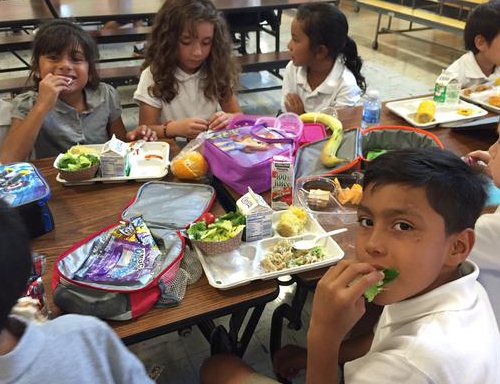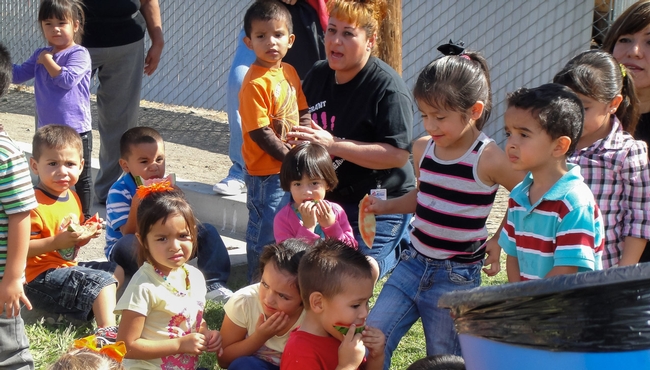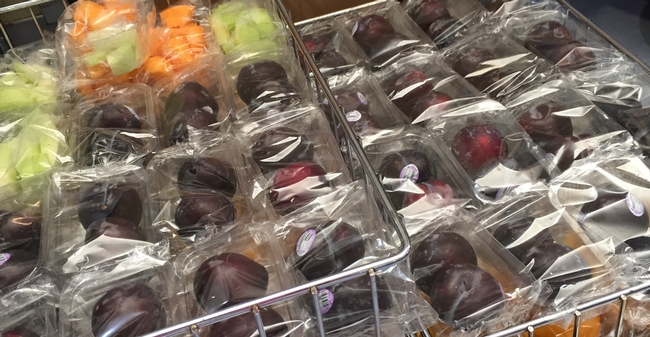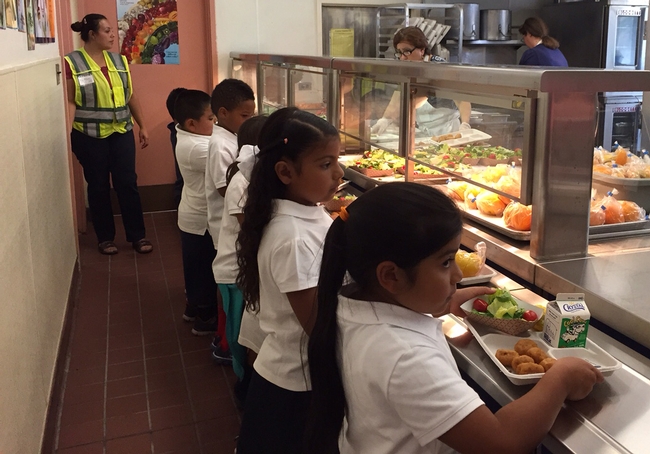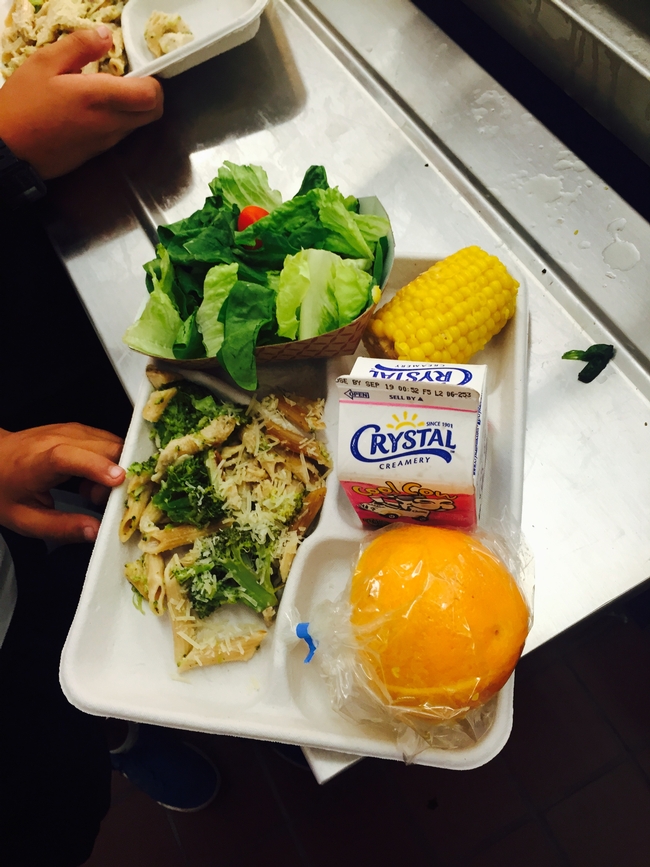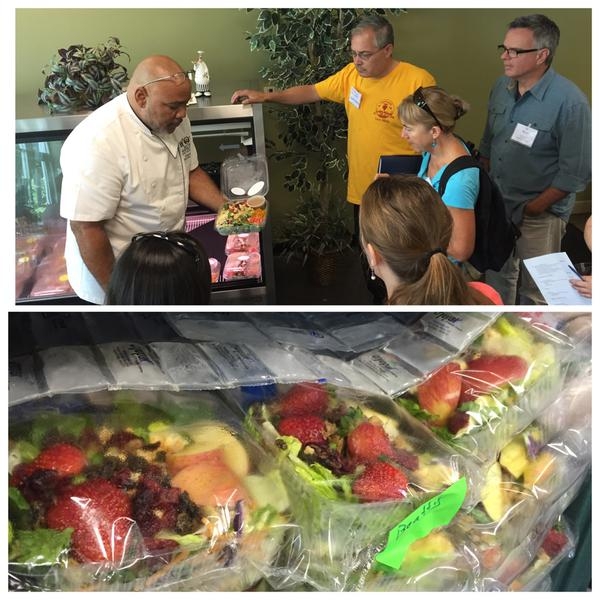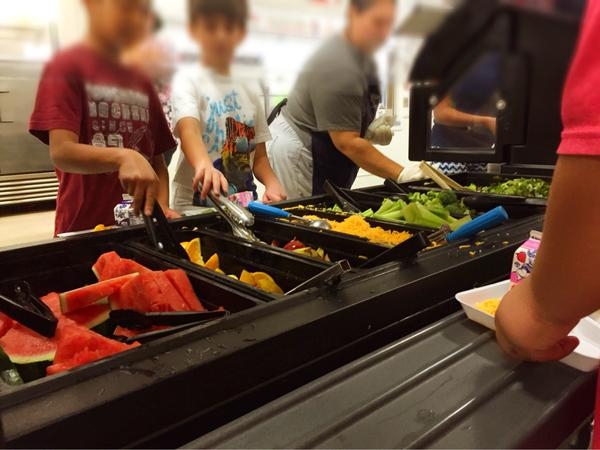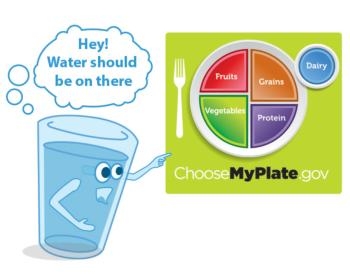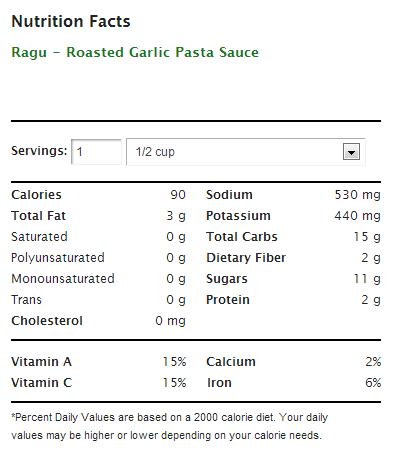Posts Tagged: childhood
Does sleep affect child obesity?
One in five Mexican-American children is obese, according to national statistics. While scientists agree that diet and exercise play a role in obesity, studies also suggest that children who don't get enough sleep may also be at increased risk for obesity. Does this mean that children who don't get enough sleep are more likely to become obese due to poor eating habits and being less physically active?
The National Institutes of Health has awarded $895,620 to Suzanna Martinez, Ph.D., assistant researcher for UC Nutrition Policy Institute (NPI) in the UC Division of Agriculture and Natural Resources, to try to answer that question. This will be the first pediatric study to examine health behaviors that link sleep to obesity in Mexican-American children.
Studies have shown that adults who are short on sleep may experience a change in metabolism and hormones, causing the person to eat more and to be more sedentary the following day.
To explore how sleep affects child obesity, Martinez will examine social and cultural factors that may impact Mexican-American children's sleep and, in turn, how sleep affects their diet and physical activity.
Martinez hopes to provide guidance for which behaviors to target to prevent obesity.
“Some researchers just focus on diet, some researchers just focus on physical activity, while other researchers say it's all about the environment so we have to improve the environment in terms of food environment and opportunities to be active,” Martinez said. “There's very little research that tries to target all three aspects of health behavior – sleep, diet and physical activity – because there are so many factors to consider. We have to know which will make the biggest impact on obesity prevention. Is it sleep, diet or physical activity or a combination of all three?” Currently, programs are heavily focused on diet and/or physical activity.
Social and cultural factors may affect sleep
Martinez is essentially combining three different studies into one to evaluate the context of sleep and how it impacts obesity. The five-year study will occur in two phases.
She'll begin by looking at the culture, environment and socioeconomic status of the Mexican American families to see which factors may relate to sleep duration.
For example, Martinez said, “If less acculturated Mexican-American parents have stricter or earlier bedtimes for their children, is that protective for getting optimal sleep, less protective or does it even matter?”
Living in crowded housing or in neighborhoods with high crime, homelessness and drugs can impact sleep for urban Latino families, Martinez learned from interviews with Latino parents for a study she published in 2015.
Sleep and physical activity and diet
The second phase of the study will involve evaluating the sleep duration of 40 Mexican American kids, ages 8 to 10, in the San Francisco Bay Area over two summers.
To record their sleep and physical activity, the participating kids will wear accelerometers during the day and while they sleep. The small, pedometer-like devices are worn on a belt around the hip.
For the first week of the three-week study, the children will be asked to get their normal sleep. During the second week, half of the children will be asked to sleep for less than 8 hours and the other half will be asked to sleep at least 10 hours. The third week, the two groups will switch over to the other sleep schedule.
Their diets will be measured using 24-hour dietary recalls. On Friday and Saturday, children will be asked what he or she ate the day before (Thursday and Friday). Starting with breakfast, the children will report what they ate and drank for meals and any snacks.
Martinez will evaluate whether healthy sleep or restricted sleep the previous night impacts the children's diet and physical activity the next day.
“With the crossover study, we will be able to see how kids compare when they get their usual sleep, healthy sleep or not enough sleep and how that impacts how much they eat and how much they move the next day,” she said.
No U.S. sleep guidelines
To maintain a healthy weight, U.S. Office of Disease Prevention and Health Promotion recommends that children get at least 30 minutes of physical activity daily and the Dietary Guidelines for America recommend that children eat a nutrient-dense and calorically balanced diet. The government office currently has no national sleep guidelines for Americans.
In a 2014 study, Martinez found that 82 percent of Mexican-American children ages 8 to 10 obtained less than the 10 to 11 hours of sleep the National Sleep Foundation recommended before 2015. Under the network of sleep researchers' new sleep recommendation of 9 to 11 hours for this age group, 20 percent of children received less than adequate sleep.
“There needs to be more research on sleep duration before we can say, ‘Sleeping this amount of time will help prevent obesity,'” Martinez said.
If her hunch is correct, promoting optimal sleep (at least 10 hours for school-age children) may be an effective way to reduce childhood obesity, and understanding the role of culture in obesity among Mexican-American children who have some of the highest rates obesity will be a key to designing effective solutions.
Research has shown that obesity contributes to numerous lifelong health problems, including heart disease, stroke, diabetes and high blood pressure. One in four overweight children become obese as an adult, and diseases like diabetes are presenting earlier than adulthood. National data show that 14 percent of white children are classified as obese, while 21 percent of Latino children are obese. With Latino children at increased risk, Martinez is committed to finding the causes of this disparity and to develop effective ways to reduce obesity among Mexican-American children.
This child obesity study is funded by a K01 Career Development Award from the National Institutes of Health National Heart, Lung and Blood Institute. Martinez has also been accepted into the K Scholars Program at UC San Francisco, which will provide her with peer support and mentorship to conduct the study.
NPI applauds Smart Snacks for schoolchildren
With an eye on reducing childhood obesity and improving overall health for children, the U.S. Department of Agriculture announced the final rule for snacks at schools. The rule made final on July 21 includes requiring snacks served at school to meet nutritional standards similar to those required of school meals.
Lorrene Ritchie, director of UC ANR's Nutrition Policy Institute applauds the USDA for their recently final Smart Snacks in School rule, which complements the nutritional improvements made to school lunches and breakfasts through the Healthy, Hunger-Free Kids Act.
Creating school environments that offer more healthful foods such as fresh fruits, vegetables and whole grains can also influence the way children eat at home and away from school.
“No single setting has the potential to influence the nutrition of more children than schools,” said Ritchie.
“Research – conducted by our Nutrition Policy Institute and others – has demonstrated that the healthy school foods and beverages consumed by children have a positive impact on their overall diet quality,” she said.
USDA also now requires any food or beverage that is marketed on school campuses during the school day to meet the Smart Snacks standards. Children are a target market for many foods and beverages that contain low nutritional quality and high calories that contribute to excess weight. To be advertised on a school campus, foods and beverages must meet the same Smart Snack standards for items sold or served by a school, according to the new Local School Wellness Policy rule.
“We are starting to see a leveling of child obesity rates in some places and changes to the school food environment are essential to furthering this progress,” said Ritchie.
Providing a consistent source of nutritious food at school will help the approximately 6.2 million California K-12 students develop healthy eating habits for life.
To read more about the federal changes to school food requirements, read the USDA news release at http://www.usda.gov/wps/portal/usda/usdahome?contentid=2016/07/0172.xml&contentidonly=true.
Farm to fingers: Schools provide fresh fruits and vegetables for children’s meals
Several grade school students set down their forks to eat their green salad, picking up individual lettuce leaves with their fingers and pushing them into their mouths. Not that I was there to judge for style, it was just an observation as I looked around the cafeteria festooned in colorful hand-cut paper banners to see how many of the kids had taken a salad.
The youngsters are required to take at least a half-cup serving of fresh fruits or vegetables as part of a healthful meal to meet national nutrition standards, but I noticed they were voluntarily eating the fresh leafy greens and orange slices.
The children had selected the food themselves from a new serving line, which was made possible by a grant from the USDA aimed at encouraging children to eat healthier school lunches. U.S. Department of Agriculture has been providing a new round of grants since 2013 to upgrade kitchen and cafeteria equipment. Ygnacio Valley Elementary School is in Mount Diablo Unified School District, which received a USDA grant.
About one-third of children in California are overweight or obese, which is associated with serious health risks.
According to The Pew Charitable Trusts, 93 percent of school districts in California, and 88 percent nationwide, need at least one piece of equipment to better serve students nutritious foods.
Kenneth Hecht, director of policy for the Nutrition Policy Institute organized the Sept. 3 visit to the Mount Diablo Unified School District for Congressman Mark DeSaulnier and USDA executives to see the improvements.
The school district serves about 20,000 meals each day, nearly half of which (46.2 percent) are free or reduced price for children from low-income families. By replacing a refrigerator bought in 1973 with a new walk-in refrigerator, the central kitchen is able to store and serve twice as much fresh produce while saving energy and energy costs, said Anna Fisher, director of Food and Nutrition Services for Mount Diablo Unified.
The new serving line allows for food to be displayed so the children can select their own food, whereas before, each tray was filled by a server and handed to the students.
“We've seen that when the children select their own food, less food gets thrown away,” said Fisher.
“The examples we are seeing at Mount Diablo Unified School District are perfect illustrations of what these USDA grants can do, from the procurement of food to serving healthy meals to children,” said Hecht.
Congressman DeSaulnier, who ate lunch with the students, is sponsoring the School Food Modernization Act (HR 3316) to continue and strengthen the USDA grants program.
Another piece of federal legislation aimed at improving child nutrition is the Healthy, Hunger-Free Kids Act of 2010, which includes farm to school support and expires on Sept. 30, 2015.
“This fall is a pivotal time for the future of Farm to School programs across the country,” said Gail Feenstra, deputy director of the UC Sustainable Agriculture Research and Education Program (SAREP) in the UC Division of Agriculture and Natural Resources.
On Sept. 2, SAREP and the Urban Environmental Policy Institute at Occidental College hosted a tour of farm-to-school sites in the Riverside Unified School District where Los Angeles-area participants were able to meet with farmers, school chefs, food service directors, advocates, researchers and elementary students and to witness firsthand the benefits and challenges of providing farm-fresh fruits and vegetables to Southern California schoolchildren.
Riverside schools have transitioned from heating prepackaged meals to buying local produce and preparing fresh food on-site.
According to Kirsten Roloson, director of Nutrition Services, and Adleit Asi, operations manager, Riverside Unified now buys $400,000 worth of produce from local farmers. One farmer, Bob Knight, who supplies oranges and other produce to Riverside Unified, said he's making five to seven times more money selling to schools than he did before.
“Farm-to-school programs increase access to fresh, healthy produce among school children while also supporting local farms,” said Feenstra. In California, she noted that 2,626 schools participate in farm-to-school programs, serving 1.8 million students and buying more than $51 million in produce from local California farmers.
Feenstra will be leading a similar farm-to-school tour for policymakers in Sacramento on Sept. 29.
"With new equipment and fresh produce, schools can prepare healthy and more appealing school meals that may be the most nutritious meal a child receives that day," Hecht said.
Whether children eat with forks or fingers, the nutritional quality of the food they eat can affect their lives, long term.
The University of California Global Food Initiative aims to put the world on a path to sustainably and nutritiously feed itself. By building on existing efforts and creating new collaborations among UC's 10 campuses, affiliated national laboratories and the Division of Agriculture and Natural Resources, the initiative will develop and export solutions for food security, health and sustainability throughout California, the United States and the world.
NPI study: Law improves beverage environment in California childcare
In 2008 and 2012, NPI researchers conducted a survey of more than 400 randomly selected California licensed childcare facilities to look at beverages in childcare before and after California's Healthy Beverages in Child Care Act (AB 2084) took effect in January 2012. Under this law, only fat-free or low-fat (1 percent) unsweetened, plain milk for children two years of age or older is allowed, and no more than one serving per day of 100 percent juice. No sugary drinks are allowed at all. Also, drinking water must be readily available throughout the day, including at all meal, snack and play times.
NPI Director Lorrene Ritchie presented NPI's research findings on June 30 at the 8th Biennial Childhood Obesity Conference in San Diego. The NPI study found that the policy was effective at improving the beverage environment in California childcare. Provision of whole milk dropped from nearly 30 percent of childcare facilities in 2008 to less than 9 percent of facilities 2012. The provision of other beverages also improved. In 2008, 27 percent of facilities offered juice more than once a day, compared to just 20 percent in 2012. Facilities offering any sugar-sweetened beverages dropped from 7.6 percent in 2008 to 6.9 percent in 2012.
“We know the beverages children consume can put a child at risk for overweight and obesity,” said Ritchie. “The good news is that the healthy beverage standards did improve the beverage environment in California childcare. This law impacts potentially a million young children in our state.”
Despite the improved beverage environment, NPI found that only 60 percent of childcare facilities were aware of the law, and only 23 percent were in full compliance with all provisions.
“We need to do more to improve the beverage environment,” said Ritchie. “Based on our findings, we recommend that all childcare providers have access to nutrition training so that more understand and are able to comply with California's childcare beverage standards.”
The NPI study also looked at the effects of serving water at the table with meals and snacks. While this was not a provision of the California law, it is a best practice for teaching children to reach for water first for thirst. Putting water on the table did not have an impact on children's intake of milk and other foods, which was a common concern of providers caring for young children. However, the study found the law didn't make much of a difference in increasing children's water intake either.
“Simply serving water at the table with meals and snacks is not likely to interfere with intake of other healthy things,” said Ritchie. “But we don't know what would happen if water were provided in such a way as to substantively increase water intake.”
The University of California Global Food Initiative aims to put the world on a path to sustainably and nutritiously feed itself. By building on existing efforts and creating new collaborations among UC's 10 campuses, affiliated national laboratories and the Division of Agriculture and Natural Resources, the initiative will develop and export solutions for food security, health and sustainability throughout California, the United States and the world.
Childhood obesity: It's a disease
I spent last week at the Childhood Obesity Conference in Long Beach representing UC Agriculture and Natural Resources. I had heard that obesity was an epidemic. I had heard it's an issue that needs to be tackled. But I hadn't ever heard the extent of it before.
According to the Centers for Disease Control and Prevention (CDC), childhood obesity has more than doubled in the past 30 years. Adolescent obesity has tripled. In 2010, more than one-third of children and adolescents were obese. Last week, the American Medical Association went as far as to declare obesity a disease. The CDC has stated this is a direct result of caloric imbalance - children aren't expending enough calories, and they're eating too many.
In his keynote address, Michael Moss, investigative reporter with the New York Times and author of Salt Sugar Fat: How the Food Giants Hooked Us, mentioned that a half cup of tomato sauce has as much sugar as several Oreo cookies. I researched this, and sure enough according to MyFitnessPal, a leading food tracking software and app, a half cup of Ragu Roasted Garlic Pasta Sauce has 11g of sugar, while a serving of three Oreo cookies has 12g of sugar. As Moss mentioned, kids are taught to expect sweetness in everything they eat. According to him, the food industry is exploiting the biology of children. No wonder we can't get our kids to eat their vegetables.
This reminds me of a video clip I saw on YouTube of Jamie Oliver's television show Food Revolution. He goes into a classroom, hoping to have kids identify fresh vegetables, only to discover they don't know the difference between a tomato and a potato.
How did we get to this point? How have we become so disconnected from the food we eat and the things we put into our body? How did we get to a point where Oreos, Happy Meals and Cheez-Its were cool, but vegetables and fruits weren't? And most importantly, what do we do about it?
Is this next video a sign of where we are headed?


